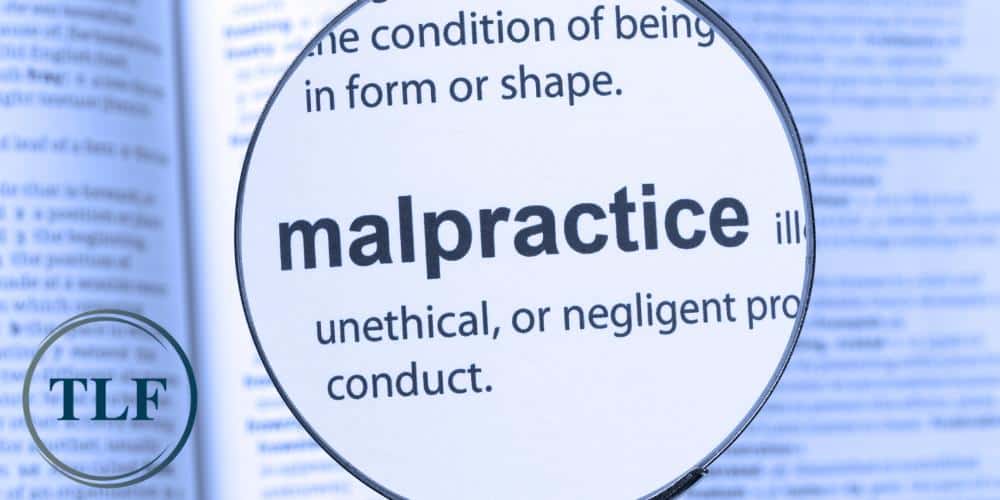Medicine is a practice, and there are no guarantees of a cure or even survival if you go see a doctor. In cases where a healthcare provider failed to provide a certain standard of care, leading to the further injury or death of a patient, a medical malpractice lawsuit may be brought against the responsible party. However, it’s not always cut and dry. The law gives us guidelines to prove whether a doctor was negligent or just unfortunate with a particular patient.
Medical negligence is a serious tort, but a difficult one to prove. It can refer to medication mistakes, surgical errors, misdiagnosis, and other types of preventable errors in a healthcare setting that ultimately harms or kills a patient. In order to prove liability in a medical negligence case, you need to be able to prove the 4 Ds of medical negligence existed. These four are Duty of Care, Deviation of Duty, Damages, and Direct Causation.
Having a better understanding of these four elements will help you learn how they can influence your case and help validate your medical malpractice claim. In this post, our experienced Ohio and Northern Kentucky medical malpractice attorneys at TLF: The Medical Injury Law Firm will thoroughly explain the 4 D’s of medical negligence and how they impact your case.

What are the Four D’s of Negligence in Medical Malpractice Cases?
How do you know if you have a medical malpractice case? To be successful, any medical negligence claim must be demonstrated with four specific elements; Duty, Deviation, Damages, and Direct Cause. We’ll go into further detail regarding each of these elements below:
1. Duty
Duty of care is a term for the legal responsibility of maintaining the health and well-being of others. Medical workers such as doctors, nurses, or other medical professionals, have a duty to follow specific procedures and provide the care a patient requires. If they can’t provide adequate medical care or meet a patient’s needs, they should refer them to a specialist.
No matter what, a doctor or medical worker (with an established doctor-patient relationship) must ensure that they are not betraying a patient’s trust.
2. Deviation
When a medical professional fails to treat their patients with the same level of skill and diligence that other qualified professionals would practice under similar circumstances, they are deviating from the expected standards of care. This is also known as a breach of duty. Common examples of deviation would be:
- Misdiagnosing a patient
- Missing a diagnosis or diagnosing too late
- Prescribing the wrong type or amount of medication
- Failing to analyze medical records
- Making a surgical error or doing unnecessary procedures
- Wrong patient, wrong procedure, or wrong site surgery
- Failure to warn of risks
- Emergency room errors
- And more
Without being a medical professional, it can be difficult to recognize deviations from accepted standards of care and even harder to prove their existence in court. Medical malpractice lawyers must consult with and get testimony from medical professionals in the same field to assist in building your case against those who committed the negligent medical treatment. The law requires that a doctor, nurse, or other medical professional in the same specialty testify that there was a breach in the standard of care.
3. Damages
A patient must also prove the doctor’s error resulted in damages. It’s not enough for a doctor to have made a mistake. Damages do not have to be physical; they can also be emotional or financial in nature. For example, if the error the doctor made resulted in the need for additional surgeries or further medical treatment to fix their mistakes, this can be used as evidence of damages.
4. Direct Causation
An injured patient must prove that the medical provider’s negligence was the direct cause of any damages they suffered. Direct cause can sometimes be difficult due to prove to the complexity of medicine and the unique aspects of each individual case. Some healthcare providers will attempt to blame the patient’s injury/injuries on his or her lifestyle and health choices, existing medical conditions, or previous conditions. It is your attorney’s job to prove that the healthcare professional’s negligence was the direct cause of your injuries and the damages that resulted and that other potential causes that are not related to the negligence be excluded.

How Can a Medical Malpractice Lawyer Help Prove Medical Negligence Occurred?
You may think your medical malpractice case is straightforward, but these cases are highly complex and aggressively defended. You are going up against teams of attorneys that work for the healthcare providers and their malpractice insurance companies. They will not give away compensation easily.
Medical professionals go through years of schooling, and it takes the opinion of someone else with the same expertise to truly judge an error. As such, medical malpractice lawyers work with other medical professionals to discover whether or not someone else broke the standards of care.
A medical malpractice lawyer will also work to collect the necessary evidence to prove that you deserve maximum compensation based on that evidence. Some of the compensation you can receive from a malpractice case includes:
- Medical Expenses: Not only should you not pay for the medical expenses associated with the injury, but you should not pay for any future medical costs that result from the healthcare provider’s negligence. Any costs already paid by your insurer will also be compensated back to the insurer, so that you do not have to worry about maxing out any insurance benefits.
- Lost Wages: Wages you would have earned while recovering from your accident along with wages you lost as a result of permanent disability also count toward your compensation value.
- Pain and Suffering: A malpractice injury could lead to serious physical pain, both emotional and mental. You might permanently fear hospitals or physicians after your experience, have chronic pain issues, or suffer from depression after being permanently disabled. Pain and suffering damages are meant to compensate for these types of scenarios.
Rest assured, when you hire a Northern Kentucky or Ohio medical malpractice attorney at TLF, we will make sure to gather all of the evidence necessary to build a successful medical negligence claim and prove the required elements of malpractice.

Call the Ohio and Northern Kentucky Medical Malpractice Attorneys at TLF Today
If you or a loved one have been injured due to a physician’s negligence, you do not have to file or prove your medical negligence claim alone. A medical malpractice attorney at TLF can help you build your case in proving medical negligence. If you live in Ohio or Northern Kentucky and are looking for a skilled attorney to recover damages for your losses, call our office today at (800) 698-4054 toll-free or complete our online intake form for your free consultation.

